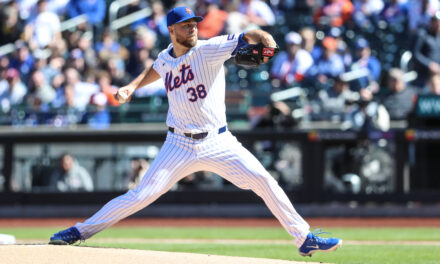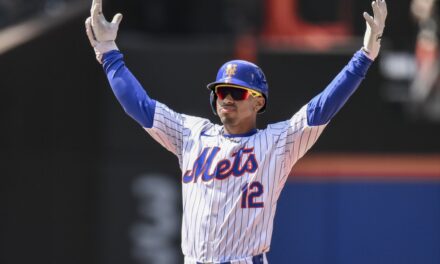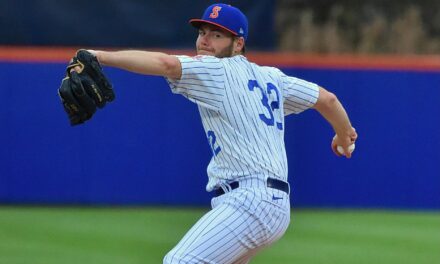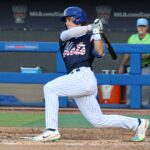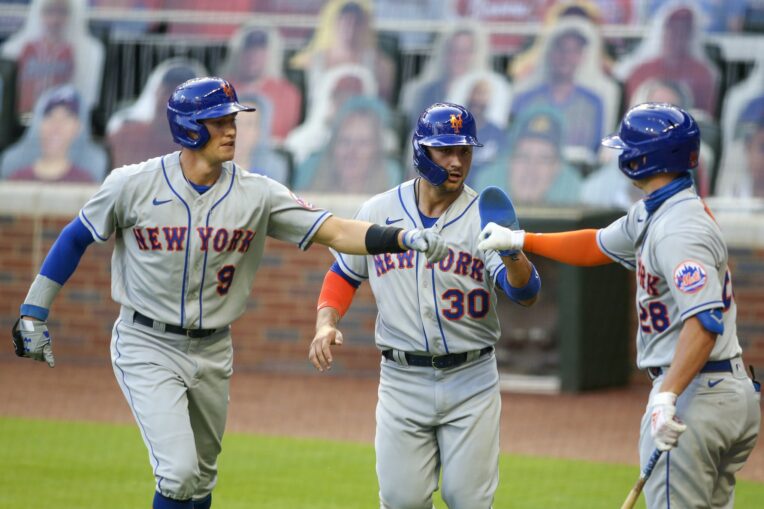
The New York Mets are in 1st place in the NL East. As of July 16, they have a three-game lead on the second-place Braves and a nearly 80% chance at the postseason per FanGraphs. Could it be possible they’ve actually been unlucky?
Of course, there’s been borderline unbelievable injury luck. Remember this lineup?

(The Mets won that game 1-0.)
Many words have already been written about those days; the Mets started the season with the first of a couple of setbacks for planned-frontline arm Carlos Carrasco. Noah Syndergaard has been in a similar boat all season, and has seen his projected return date pushed back. The bigger impacts, though, have been felt on the offense, where essentially every regular player in the lineup outside Francisco Lindor — has missed minor to significant stretches due to injury.
With that backdrop, it’s easy to explain the fact New York is 29th in all of baseball in runs scored. However, there’s a lot more baked into that number as well – not only have the Mets played the fewest games in baseball due to rainouts, those rainouts have led to shorter games in doubleheaders, meaning the Mets have actually played fewer innings per game than a usual team.
If you strip away all of those confounding factors and just look at a catch-all rate measure of offense like wOBA (weighted on-base average), the Mets rank 25th in baseball — still not what you’d want to see out of a hypothetical World Series contender.
This fact makes this upcoming trade deadline — one which it already seems the Mets are highly active in — an abnormally confusing one.
Carlos Carrasco and Noah Syndergaard are massive question marks as to whether they’ll return and what they’ll look like, and long-term injuries to David Peterson and Joey Lucchesi have led to a Mets rotation featuring the likes of Corey Oswalt and Tylor Megill two out of five days. However, by almost all indications, it’s the offense that has held the team back!
It's hard to know how to improve the Mets. The pitching is good, both starting and relieving. And the bench is good. It's the starting lineup that's a problem and… well… it *should* be good.
— Good Fundies Brian (@GoodFundies) July 10, 2021
Of course, the Mets have had their lineup starters miss long periods of time, but that’s not the concern — it’s that when their lineup starters have played… they mostly haven’t been good.

Of the Mets’ core, only Brandon Nimmo has improved his hitting results this season compared to his career norms, and some of the declines here are extremely stark; perhaps most notably Michael Conforto in his contract year. To give a sense of scale, wOBA is normalized to an OBP scale. Per Fangraphs’ rule of thumb, Conforto has had between an “above average” to “great” career level, and this season has been below the “awful” level.

So, the Mets have clearly been unlucky in that this version of Conforto (and McNeil, Lindor, etc.) is the one they’ve gotten this season. But there’s more to it – could it be that Conforto (and McNeil, Lindor, etc.) have actually been getting unlucky themselves?
Have Mets hitters been getting unlucky?
Only 3 qualifying Mets are above the MLB average in catch-all offensive stat wOBA, whereas 7 are above average in expected wOBA per @statcast batted ball data. Who might be most primed for a bounce-back second half?#LGM pic.twitter.com/6jw8bdAwpR
— Mets Analytics (@MetsAnalytics) July 9, 2021
Everyone’s baseball dad has told them at one point or another: The key is just to hit it where they ain’t!
But, of course, it’s not that simple. Batters do have a fair amount of control over where, at what angle, and how hard they hit the ball, but if they could really control the direction, they’d hit 1.000. The Mets rank 20th in baseball this season with a .286 BABIP (batting average on balls in play) despite ranking 11th in line drive percentage.
The fact is that baseball involves a whole lot of luck — you can swing and completely miss at the first pitch of an at-bat, and that would be a better outcome than making contact but hitting a pop-up to the pitcher. What’s great about baseball, though, is with 162 games a year, there’s eventually plenty of sample size to see who’s good and who’s not.
Take a look at Michael Conforto I noted him in the chart above as potentially the unluckiest Mets hitter, and not just in the sense that he’s having a down year right when his contract is due to expire. Statcast’s xwOBA (expected weighted on-base average) statistic uses their massive repository of batted-ball data to look at similar batted balls by exit velocity, launch angle, and batter sprint speed to assign an out/single/double/triple/home run probability to every batted ball, and then rolling that up with actual walks and strikeouts to create a stat that better reflects what the batters can control – the quality of their batted balls – and mostly eliminates what they can’t – the quality and placement of the defenders.
By this measure, Conforto somehow ranks second among all qualifying Mets hitters — behind just Pete Alonso — and ahead of the likes of Brandon Nimmo, who’s hitting .341 in a monster offensive campaign thus far and getting probably the best results of any Mets hitter.
So, is it all just bad luck? Can we expect Conforto to just regress back to the mean, in a good way?
Well, not entirely. As with all statistics, there’s more to the picture! Because although Conforto has no control over whether a center fielder makes a sick diving catch to rob him, he can sort of affect where the defenders are placed when he comes up.

Michael has, obviously, been shifted heavily this season. That can of course impact BABIP- and xwOBA-type numbers – it’s a lot harder to “hit it where they ain’t” when the opposing team has years of data telling them where you’re most likely to hit it.
For a guy like Conforto, even if you’re ripping 105-mph exit velocities, if they’re all into a congested group of infielders, the results won’t be as pretty as the expected numbers. It’s easy to see why they shift – look at the extremely skewed distribution of his batted balls, especially the green grounders, per Fangraphs:

Of course, Conforto’s been hitting ground balls to the right side his whole career, and he’s been shifted his whole career too. His xwOBA this season (.353) is right around his career average (.357) – it’s fair to expect his results should even out considerably.
McNeil is a similar story — his wOBA is almost 60 points below his career average, while his xwOBA is right in line (.329 vs. .334). As the sample sizes expand, results should improve. Francisco Lindor, meanwhile, has started to heat up with the bat already; reflecting the streaky nature of his career:

Of course, like all teams, the Mets have benefitted from a bit of good luck, too — mostly on the pitching side, where Jacob deGrom has somehow avoided his injury scares to this point, and Taijuan Walker (wOBA .253; xwOBA .307) has outperformed expectations to the tune of a well-deserved All-Star berth.
However, it’s fair to say in aggregate the Mets have gotten the short end of the stick thus far in 2021, and considering their resilience thus far, and potential reinforcements on the way via injury and trade — alongside the continually sputtering peers in the NL East — it’s fair to project they finish the job as division champs when the season comes to a close.



